Dalton Transactions is delighted to announce an upcoming themed issue entitled Contributions of Inorganic Chemistry to Energy Research, with guest editors Duncan Wass and Neil Robertson. It is our pleasure to invite you to contribute to this themed issue.
Developing new sustainable sources of energy is the most pressing of all objectives for the scientific community, driven by finite fossil fuel resources and the need to mitigate greenhouse gas emissions. This has been recognised by both industry and the major funding councils who have signposted energy research as a priority area. The research highlights in this area are big news, and attract the biggest headlines for the scientific and technological community. This themed issue will focus on the inorganic chemistry that lies at the heart of many sustainable energy technologies, including themes such as solar energy conversion, hydrogen storage, fuel cells, batteries, nuclear chemistry, biomass conversion, CO2 conversion and other aspects of catalysis for energy.
Deadline for Submission: 8th October 2010
The manuscript should be prepared according to the format for regular articles and will be subjected to the normal refereeing procedure. Manuscripts should be submitted no later than 8th October 2010 by using the web submissions service or as an email attachment to the Dalton Transactions Editorial Office. Please indicate on submission that your manuscript is intended for this themed issue.
The issue will include articles from the following people:
Robert Crabtree
Graham Hutchings
Fraser Armstrong
If you are interested in contributing to this themed issue or if you would like any further information, we would be delighted to here from you – please contact us at Dalton-rsc@rsc.org.
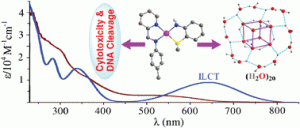 An unusual (H2O)20 discrete water cluster in the supramolecular host of a charge transfer platinum(II) complex: cytotoxicity and DNA cleavage activities
An unusual (H2O)20 discrete water cluster in the supramolecular host of a charge transfer platinum(II) complex: cytotoxicity and DNA cleavage activities










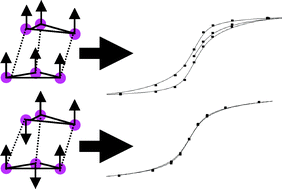 MCD spectroscopy of hexanuclear Mn(III) salicylaldoxime single-molecule magnets
MCD spectroscopy of hexanuclear Mn(III) salicylaldoxime single-molecule magnets 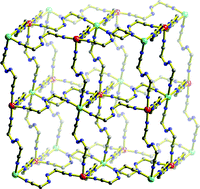 Synthesis, structures and spin crossover properties of infinite 3D frameworks of iron(II) containing organodinitrile bridging ligands
Synthesis, structures and spin crossover properties of infinite 3D frameworks of iron(II) containing organodinitrile bridging ligands 

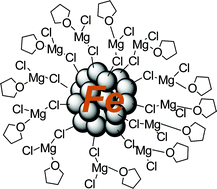 At the frontier between heterogeneous and homogeneous catalysis: hydrogenation of olefins and alkynes with soluble iron nanoparticles
At the frontier between heterogeneous and homogeneous catalysis: hydrogenation of olefins and alkynes with soluble iron nanoparticles 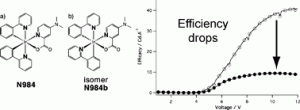 An inconvenient influence of iridium(III) isomer on OLED efficiency
An inconvenient influence of iridium(III) isomer on OLED efficiency 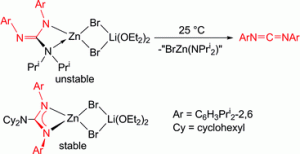 Bulky guanidinato and amidinato zinc complexes and their comparative stabilities
Bulky guanidinato and amidinato zinc complexes and their comparative stabilities 